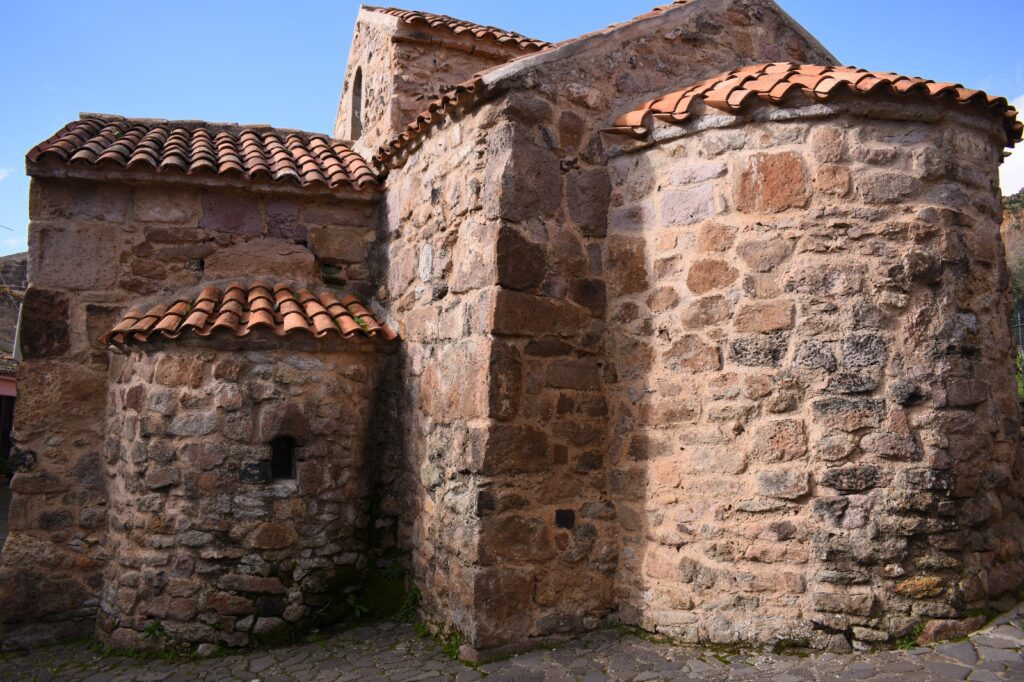Chiesa di Santa Croce
Chiesa di Santa Croce
The church of Santa Croce a Ittireddu, also known by the evocative appellations of 'Santa Maria del Cimitero' or 'Madonna de s'Ena frisca', stands as a fascinating example of Sardinian sacred architecture, characterised by an extraordinary essentiality and formal elegance. This multiple name not only reflects the richness of the local tradition, but also offers interesting insights into the history and function of the building in the social and religious context of Usini. The dating of the building, placed by scholars between the late 13th and 14th centuries, coincides with a period of significant urban expansion of Usini towards the area of Piazza Castello. This chronological detail not only provides valuable information on the development of the settlement, but also places the church in the broader context of the evolution of Gothic architecture in Sardinia, a period of great artistic and cultural ferment for the island. The original structure of the church, built in local limestone, testifies to the skilful mastery of medieval builders in the use of local materials.
The façade, an element of particular architectural merit, is distinguished by the presence of pointed arches, a typical Gothic feature that gives the building an elegant verticality. The finely crafted decorations that enrich the façade not only aesthetically enhance the church, but also offer interesting insights into the artistic influences and sculptural techniques of the time.
Nel corso dei secoli, la chiesa di Santa Croce ha subito una serie di interventi che ne hanno modificato e arricchito la struttura originaria, testimoniando l’evoluzione delle esigenze liturgiche e delle tendenze architettoniche. L’aggiunta del transetto ha conferito alla pianta una forma a croce, caricando l’edificio di un più profondo simbolismo religioso. L’apertura di finestre a sesto acuto non solo ha migliorato l’illuminazione interna, ma ha anche accentuato il carattere gotico della struttura. L’inserimento di cappelle laterali rappresenta un’importante evoluzione funzionale, rispondendo probabilmente alla crescente richiesta di spazi devozionali privati o dedicati a specifici culti. La costruzione della sagrestia, d’altra parte, riflette le mutate esigenze pratiche legate alla celebrazione dei riti liturgici. Un elemento di particolare rilievo è l’aggiunta della torre campanaria, che non solo ha arricchito il profilo architettonico della chiesa, ma ha anche assunto un importante ruolo sociale e simbolico, segnando il tempo della comunità e chiamando i fedeli alla preghiera. La chiesa di Santa Croce si configura quindi come un palinsesto architettonico di straordinario valore storico e artistico. La sua evoluzione nel tempo, dalla struttura originaria gotica alle successive aggiunte e modifiche, racconta la storia non solo di un edificio, ma di un’intera comunità. Ogni elemento, dagli archetti della facciata alla torre campanaria, offre preziose informazioni sull’evoluzione dell’architettura religiosa in Sardegna, sulle pratiche devozionali e sulle influenze artistiche che hanno plasmato la cultura dell’isola nel corso dei secoli. Questo monumento non solo arricchisce il patrimonio culturale di Usini, ma si pone anche come un importante oggetto di studio per storici dell’arte, architetti e antropologi. La sua complessità stratigrafica e stilistica continua a suscitare interesse e a stimolare la ricerca, promettendo di rivelare ancora molti segreti sulla storia e l’arte della Sardegna medievale e moderna.







